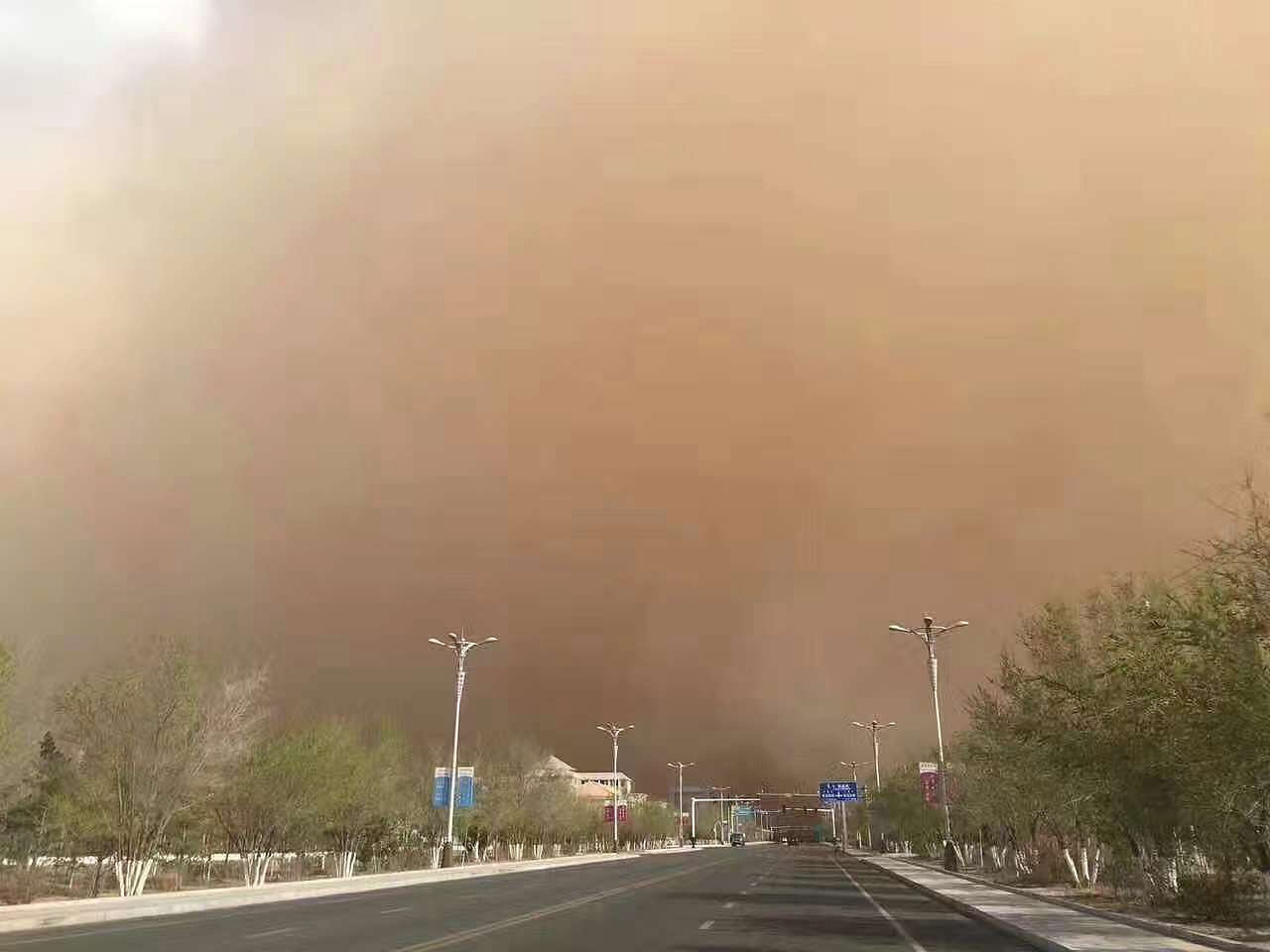Beijing has been shrouded in a brown and dusty color since Thursday, as the heaviest sandstorm in two years swept through the capital.
The National Meteorological Center (NMC) on Friday renewed a blue alert for sandstorm that was first issued early on Thursday morning. And according to the monitoring data, the PM10 concentration in the northwest of the capital at one point exceeded 2,000 micrograms per cubic meter.
In most areas of Beijing, the PM10 concentration has exceeded 1,000 micrograms per cubic meter.

Girl taking a selfie with the Forbidden City in the background during sandstorm on May 4, 2017. /VCG Photo
According to the municipal meteorological department, the dusty weather is expected to end by late on Friday.
Where does the sandstorm come from?
Beijing is not the only area affected by the sandstorm. Data provided by China National Environmental Monitoring Center shows that the sandstorm has spread to an area of 2,170,000 square kilometers, with over 10 cities and provinces including Beijing, Shaanxi, Shanxi, Inner Mongolia and Hebei all within its reach.
NMC's senior engineer Zhang Bihui said the sandstorm was caused by low rainfall and the heavy winds triggered by the confrontation of two cold fronts. The sand was brought from Mongolia and Inner Mongolia, and attracted more sand and dust while transiting through the desert in northwestern China.

A "wall" formed by dust and sand in Inner Mongolia on May 1, 2017. /VCG Photo
The PM10 concentration in Inner Mongolia also exceeded 2,000 micrograms per cubic meter at its peak. The sandstorm has caused serious air pollution to the areas affected. Meteorological organizations advise residents to wear masks while going out and keep their windows closed to prevent harm.
Sandstorms less frequent in Beijing
The sandstorm has been one of the main meteorological factors affecting air quality in Beijing during the spring, but in recent years its influence has waned.
Statistics show that from 2006 to 2010, the dust weather's contribution to the average PM10 concentration was 8.3 micrograms per cubic meter. The number fell to 4.3 micrograms per cubic meter from 2011 to 2015.

Girls wear masks while walking in sandstorm in Beijing. /VCG Photo
According to the Beijing Meteorological Service, from the 1960s to 1980s sandstorms occurred on 10-20 days every spring. From 2001 to 2010, the number of days was shortened to seven, and since 2011 the dust has bothered Beijing for about three days every spring.
One of the main reasons for the improvement is the Chinese government's ecological projects. China has launched the "Green Great Wall" program since 1978, aiming to establish a vast area of forest strips in the north, northeast and northwest regions. The plan is to hold back the expansion of the Gobi Desert.
Along with the global climate warming, the weather in northern China has gradually changed. The decrease in the windy days has also lessened the frequency of sandstorms.











